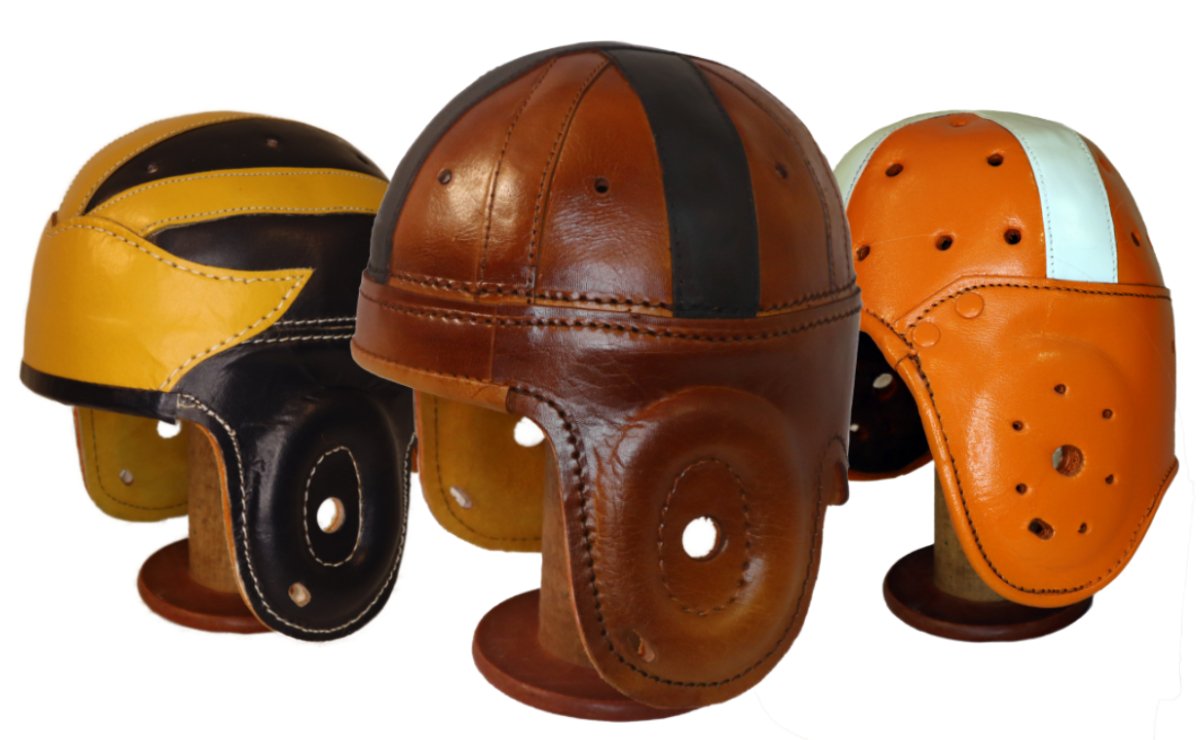Understanding Antique Football Helmets
Antique football helmets represent a significant era in the sport’s history, showcasing the evolution of player safety and equipment design. These artifacts are highly sought after by sports memorabilia collectors and historians alike, offering a tangible connection to the early days of American football.
Evolution and Key Features
The earliest football headgear, emerging in the late 19th and early 20th centuries, bore little resemblance to modern helmets. Key evolutionary stages include:
- Early Leather Helmets: Initially soft, padded leather caps, sometimes referred to as “head harnesses.” These offered minimal protection and were often custom-made or produced by small local shops.
- Hardened Leather: Later, leather was treated, molded, and often shellacked to create a more rigid shell, offering improved impact resistance. These frequently featured ear flaps and rudimentary ventilation holes. Designs varied, including “flat-top” and more rounded crowns.
- Suspension Systems: The introduction of internal webbing or suspension systems, typically made of canvas or leather straps, was a crucial development. This system aimed to cushion the head by creating a space between the skull and the outer shell, absorbing and distributing impact forces.
- Padding: Interior padding evolved from simple felt or wool to more structured combinations of materials like rubber and horsehair, aiming to enhance comfort and shock absorption.
Factors Influencing Value and Collectibility
The value of an antique football helmet is determined by several critical factors:

- Rarity and Age: Helmets from earlier periods (pre-1940s) or those produced in limited quantities, such as those from smaller or defunct manufacturers, are generally more valuable.
- Condition: Original condition is paramount. Helmets with intact, supple leather, original padding, chinstraps, and minimal structural damage command higher prices. Desirable “game-used” wear is distinct from neglect or severe damage.
- Manufacturer: Helmets from renowned early manufacturers like Spalding, Goldsmith, Stall & Dean, or early Riddell leather examples are often more sought after due to their historical significance and quality.
- Provenance: A documented history linking a helmet to a specific player (especially a well-known one), team, or important game can significantly increase its desirability and value.
- Originality: Helmets with all original parts, including stitching, padding, straps, and any period paint or decals, are preferred over restored or pieced-together examples.
- Aesthetic Appeal: Unique designs, distinct colors, or early team logos can also enhance a helmet’s collectible appeal.
Identification and Care
Proper identification and care are essential for preserving these historical items and understanding their context:
- Identification: Look for manufacturer’s stamps, labels, or embossed logos, often found inside the crown, on ear flaps, or on chinstrap attachments. The style of construction (e.g., number of panels, seam types), padding materials, and hardware can help date the helmet. Cross-referencing with period photographs, catalogs, and specialized collector guides is invaluable.
- Handling: Handle with clean hands or gloves to minimize transferring oils and dirt to the leather. Support the helmet from its base rather than by straps or fragile components.
- Storage: Store in a stable environment with controlled temperature (ideally 65-70°F or 18-21°C) and relative humidity (around 45-55%). Avoid direct sunlight, UV exposure, and proximity to heat sources, which can dry out and crack leather.
- Cleaning: Generally, minimal intervention is best. A light dusting with a soft, natural-bristle brush is often sufficient. Never use water or harsh chemical cleaners on antique leather. If leather conditioning is considered, consult a professional conservator, as improper treatments can cause irreversible damage.
- Display: If displayed, use an acid-free, archival quality head form to help maintain its shape and distribute weight evenly. Avoid overcrowding with other objects.



